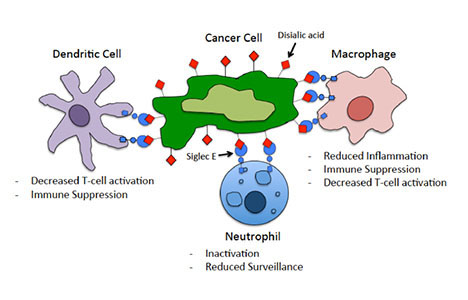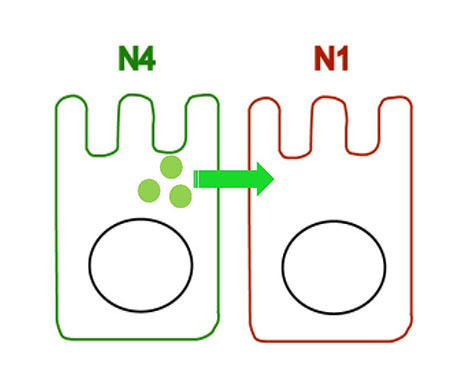Active Grants — Immunity and Fibrosis Platform
Title: Identification of KLF10 as a novel osteoimmunological gene that influences bone metabolism through alterations in T cell biology
Investigative team: John R. Hawse, IV, Ph.D., Khashayarsha Khazaie, Ph.D., Merry Jo Oursler, Ph.D.
Central hypothesis: The research team is working to identify genes and develop relevant genetic model systems through which to study how perturbations in immune cell function lead to alterations in bone metabolism. The specific goals are to comprehensively characterize the molecular mechanisms by which the Kruppel-like factor 10 (KLF10) transcription factor functions in T cells and to elucidate the processes by which deletion of KLF10 in T cells results in bone anabolic effects.
Multiple diseases involving the immune system dramatically accelerate bone loss, including postmenopausal osteoporosis, rheumatoid arthritis, autoimmune diseases and periodontal disease. This correlation has led to the emergence of a new field of study — osteoimmunology — that focuses on understanding the processes by which cells of the immune system directly impact bone biology and skeletal health. Indeed, it is becoming well-recognized that many bone-related diseases are actually driven by alterations in immune cell function.
Clinically, this is problematic given that nearly all therapies used to treat such skeletal disorders are designed to specifically target bone cells, with little to no consideration given to the role of the immune system or the impact of these drugs on immune cell function. For these reasons, it has been suggested that bone pathologies cannot be studied in isolation and that all drug development for bone-related disorders must take into account the immune system.
Potential outcomes and advances: The team's preliminary data have shown that KLF10 plays important roles in T cell functions and that deletion of this gene in T cells results in a high bone mass phenotype in mice.
Identifying the mechanisms by which ablation of KLF10 in T cells affects bone metabolism will allow for a better understanding of the cross-talk between the immune and skeletal systems and will improve scientists' ability to design novel therapeutic strategies to treat bone diseases by altering immune cell function.
Title: Regulation of the immune response to tumors by ST8Sia6

Many cancer cells increase expression of ST8Sia6, an enzyme that adds disialic acid to proteins on the surface of cancer cells. The team proposes that these disialic acids bind to Siglec-E on the surface of macrophages, neutrophils and monocytes to inhibit the immune response to cancer.
Investigative team: Virginia M. Shapiro, Ph.D., Haidong Dong, M.D., Ph.D., Khashayarsha Khazaie, Ph.D., Daniel D. Billadeau, Ph.D., Martin E. Fernandez-Zapico, M.D.
Central hypothesis: In this project, the research team is investigating the role of the protein St8Sia6 in cancer. As cells become cancerous, they increase the level of ST8Sia6. The central hypothesis is that ST8Sia6 acts to enhance the contact between proteins on tumor cells and the receptor Siglec-E on immune cells, which is interpreted within the immune cells as an instruction to shut down.
Each year in the United States, approximately 1.6 million people are diagnosed with cancer, leading to 600,000 deaths. Traditional chemotherapies kill cancer cells, but have many side effects and are not tolerated well by older individuals.
Recently, a new approach has been developed in which a patient's immune system is directed to kill cancer cells. While the immune system has the capacity to destroy tumors, a key finding has been that cancer cells display protein molecules on their surface that block the immune system from attacking. Hence, one way to combat cancer is to disable such proteins.
Potential outcomes and advances: Innovative research that identifies ways in which tumors block the body's immune response can lead to novel immunotherapies. Therapies that impair the function of ST8Sia6 may help combat certain types of cancer, an idea that the team is beginning to evaluate in this project.
Title: Intercellular transfer of cytoplasm, and spread of infection, through nectin-directed trans-endocytosis

The research team has discovered nectin-elicited cytoplasm transfer (NECT). A cell expressing nectin-1 in its plasma membrane (red) extracts cytoplasmic material from a cell expressing nectin-4 in its plasma membrane (green; the green arrow shows transfer). This process, perhaps an ancestral mode of cellular communication, peaks while cells stabilize their contacts.
Investigative team: Roberto Cattaneo, Ph.D., Daniel D. Billadeau, Ph.D.
Central hypothesis: The investigative team recently discovered a process eliciting transfer of cytoplasmic materials between cells expressing the cell adhesion proteins named nectins. Importantly, the team showed that even large cytoplasmic components are transferred between cells and can continue to function after transfer.
Nectins are immunoglobulin-like transmembrane molecules that mediate calcium-independent cell-cell adhesion. The evolutionarily conserved nectin protein family comprises four members, nectin-1 (N1) to nectin-4 (N4). Nectin-nectin interactions have a defined heterophilic specificity pattern. Nectins and nectin-like proteins also serve as receptors for viruses. While analyzing how the measles virus takes advantage of N4 to spread in tissue, the team discovered a new intercellular material transfer process, which it named nectin-elicited cytoplasm transfer (NECT).
The research team has shown that NECT relies on two components of nectins: the adhesive interface located at the tip of the ectodomain and the cytosolic domain. Moreover, the team has discovered that NECT is most active during cell adhesion, and that cytoplasm transfer is most efficient from N4- to N1-expressing cells.
Most importantly, the team has shown that transferred cytoplasmic cargo can include large components — in particular, viral ribonucleocapsids — and that these remain functional after transfer to acceptor cells. The team has established cell sorting and biochemical methods to characterize the mechanisms of the transfer process, and has begun to document subcellular traffic of proteins by advanced confocal and time-lapse microscopy.
In this project, the team is investigating two hypotheses: that a process related to clathrin-mediated endocytosis underpins NECT, and that the measles virus membrane fusion apparatus facilitates ribonucleocapsid escape from degradation.
Potential outcomes and advances: Mechanistic understanding of NECT may eventually allow scientists to exploit it for targeted delivery of therapeutics to specific cells and organs.